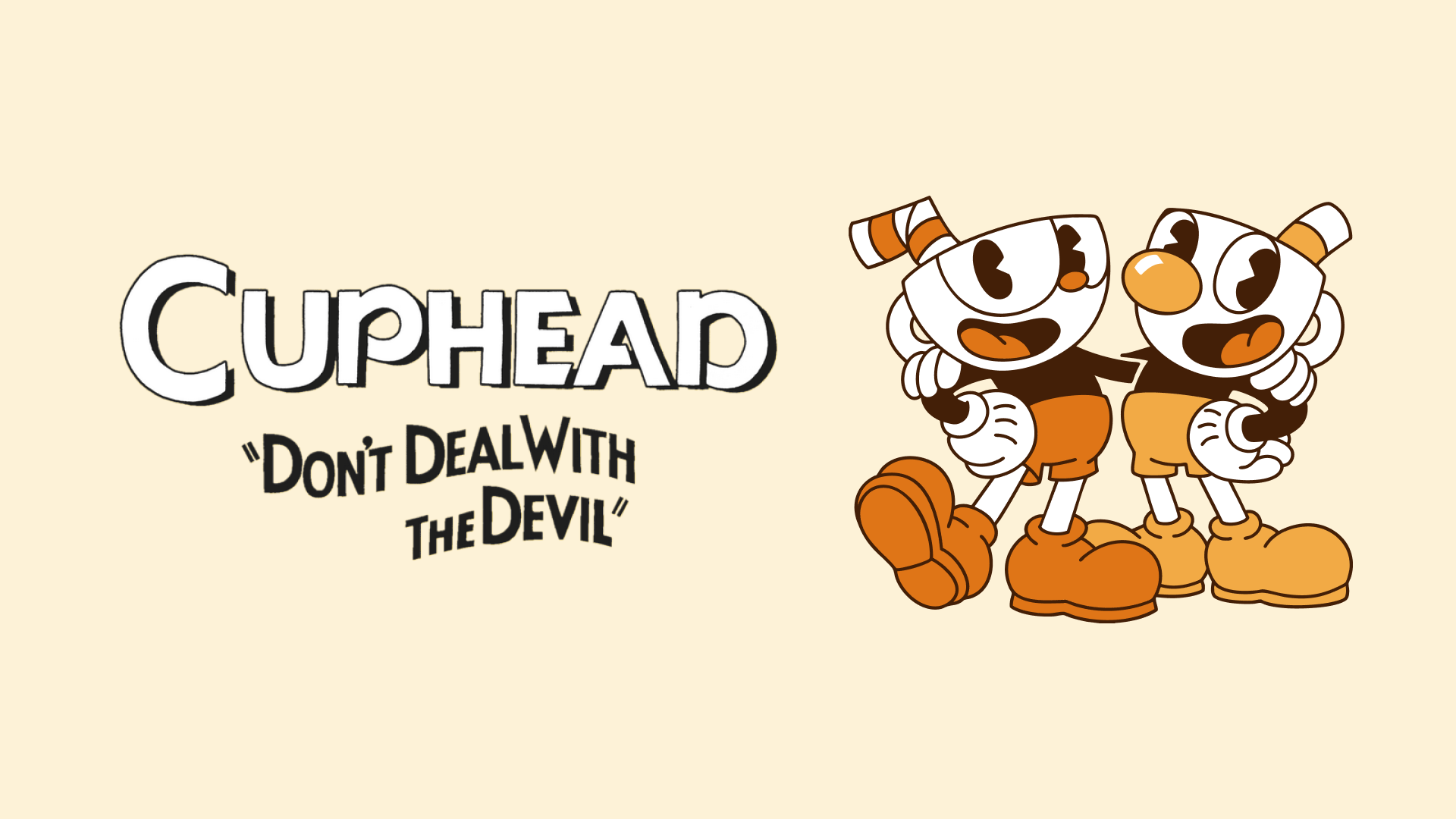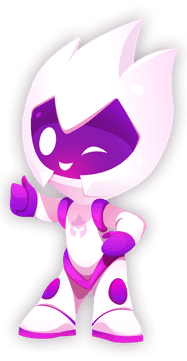Cuphead's conception can be traced back to the early 2010s when brothers Chad Moldenhauer and Jared Moldenhauer, passionate fans of 1930s-style animation and classic run-and-gun games, decided to blend their love for both art forms. Determined to create a unique and challenging gaming experience, the Moldenhauer brothers formed Studio MDHR in 2013.
It started with only two developers, but by the end of its launch, it would grow to a passionate team of over 25 workers. Cuphead was a labour of love that embraced the essence of classic animation and gaming. The dedication to creating a visually stunning experience and a well-designed gameplay structure paid off, making Cuphead an unforgettable and influential title in indie gaming.
The idea for Cuphead originated from the creative minds of brothers Chad and Jared Moldenhauer. They envisioned a game that would pay homage to 1930s-style hand-drawn animation and classic run-and-gun games. The decision to adopt this art style became the game's defining characteristic.
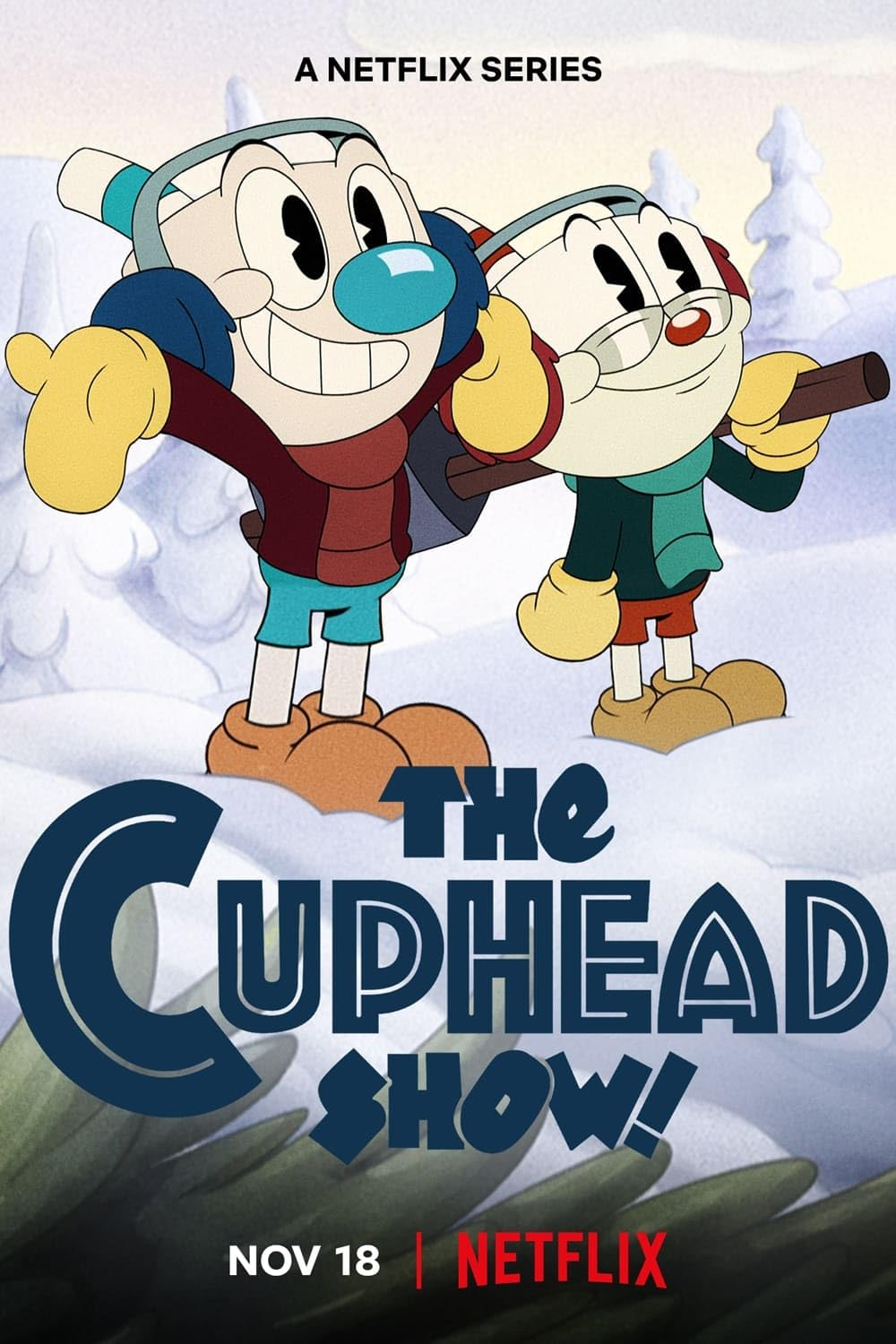
The Long Road Ahead: Development Process
The conception of Cuphead can be traced back to the early 2010s when brothers Chad Moldenhauer and Jared Moldenhauer, passionate fans of 1930s-style animation and classic run-and-gun games, decided to blend their love for both art forms. Determined to create a unique and challenging gaming experience, the Moldenhauer brothers formed Studio MDHR in 2013.
It started with only two developers, but by the end of its launch, it had grown to a passionate team of over 25 workers. Cuphead was a labour of love that embraced the essence of classic animation and gaming. The dedication to creating a visually stunning experience and a well-designed gameplay structure paid off, making Cuphead an unforgettable and influential title in indie gaming.
The idea for Cuphead originated from the creative minds of brothers Chad and Jared Moldenhauer. They envisioned a game that would pay homage to 1930s-style hand-drawn animation and classic run-and-gun games. The decision to adopt this art style became the game's defining characteristic.
Formation of Studio MDHR
The most distinctive aspect of Cuphead's development was the hand-drawn animation. The team at Studio MDHR meticulously hand-animated each character, enemy, and environment frame by frame, mimicking the techniques used in the 1930s cartoons. This approach was time-consuming but integral to achieving the game's unique visual style.
The game's core mechanics were inspired by classic run-and-gun titles such as Contra and Gunstar Heroes. The team worked to create a challenging and rewarding gameplay experience, incorporating various boss battles, platforming elements, and shoot-'em-up sequences. The development process involved constant iteration and refinement. The team would frequently playtest the game, gather feedback, and make adjustments to improve the overall gameplay and balance the difficulty curve.
To further enhance the game's retro feel, Cuphead's soundtrack was composed in a jazz and big band style, perfectly complementing the 1930s animation. Studio MDHR collaborated with composer Christopher Maddigan to create an authentic and memorable musical experience.
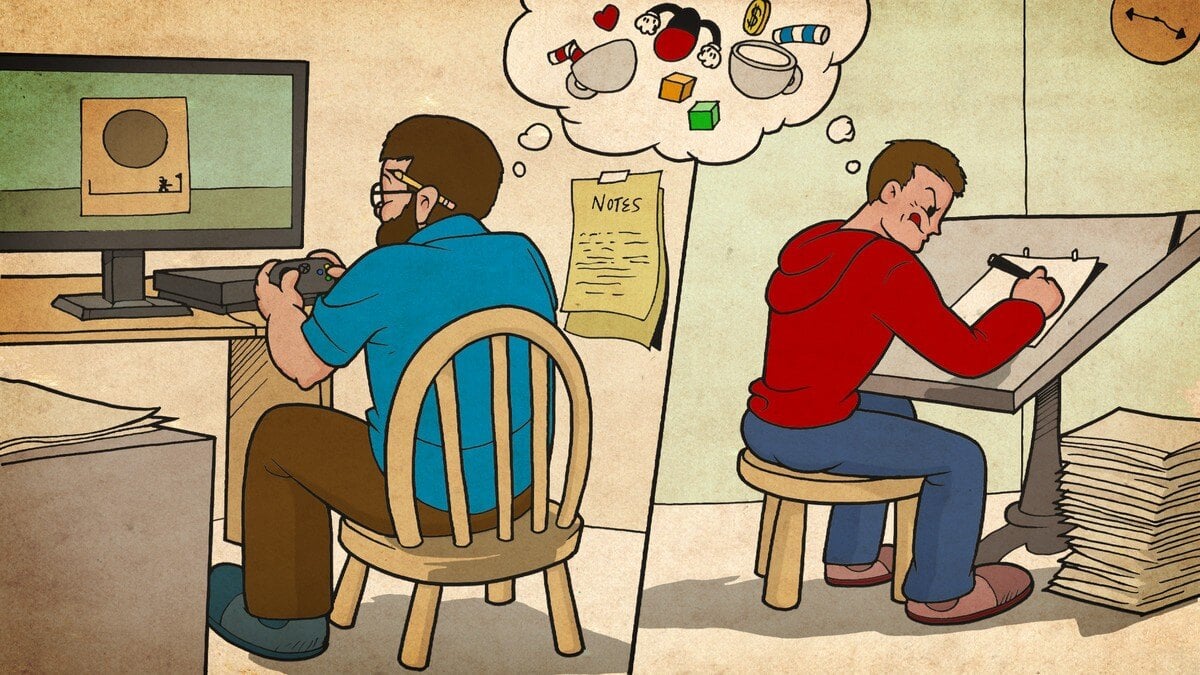
Funding a Risky Project
For an indie game with a big vision, internal and external investment was essential. So, what did the two brothers do?
- Personal Investment: The initial funding for Cuphead came from the brothers' personal savings. They believed in the project and invested their own money to kickstart development.
- External Funding: As development progressed, the Moldenhauer brothers sought additional funding to support growing needs. They secured financial support from private investors and funding partnerships.
- Kickstarter Campaign: In 2013, Studio MDHR launched a Kickstarter campaign to raise more resources and create awareness. Kickstarter allows creators to pitch projects to the public and receive financial contributions from interested backers in exchange for rewards.
Cuphead's Kickstarter campaign offered backers various rewards, such as digital game copies, exclusive merchandise, and access to behind-the-scenes content. The campaign was successful, generating significant financial backing from the gaming community and increasing the project's visibility.
The Kickstarter campaign alone provided only some of the necessary funding to complete the ambitious development of Cuphead. Still, it played a crucial role in supplementing the project's increased game visibility from dedicated and hardcore platformer gamers.
Uniqueness is Strength
At the time, games were very focused on 3D graphics as the next generation of technology was approaching with new consoles. Cuphead was aimed to be a throwback to where we all started or loved within gaming, such as we did with 1985's Super Mario Bros. Combining personal investment, external funding, and a successful Kickstarter campaign, Studio MDHR secured financial support to bring Cuphead to life.
The hand-drawn animation style was at the core of the game's identity, and it was inspired by the works of Fleischer Studios and Disney cartoons from the golden age of animation. This decision added an extra layer of complexity to the development process, as all the characters, environments, and effects had to be painstakingly hand-animated frame by frame.
The small team at Studio MDHR faced numerous challenges, including technical hurdles, funding constraints, and inevitable delays. However, their unwavering dedication and artistic vision kept them on course.
Born for Success - Crowd's Announcement Reaction
Cuphead's announcement reaction was overwhelmingly positive and met with great excitement and anticipation from gamers and the gaming community. When Studio MDHR unveiled the game at Microsoft's E3 press conference in June 2014, it immediately stood out for its unique art style, reminiscent of 1930s-era hand-drawn animation, a departure from the typical contemporary graphics in most games.
The retro aesthetic and charming visuals instantly captivated audiences, and many gamers were thrilled to see a developer taking such a bold and creative approach. Cuphead's announcement trailer showcased its classic run-and-gun gameplay and challenging boss battles, adding to the buzz surrounding the game.
Social media platforms exploded with positive reactions, and gamers quickly shared their excitement about this fresh and innovative title. Many praised Studio MDHR's dedication to hand-drawn animation, a rare and ambitious choice in the modern gaming landscape.
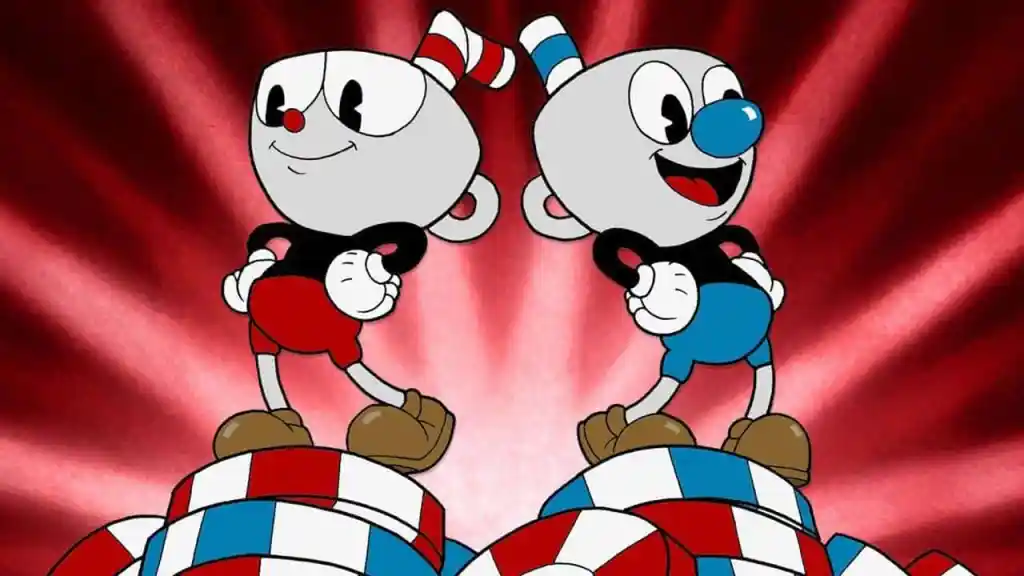
Indie Games Creativity Strikes Again
The art style was compared to classic 1930s cartoons, especially those by Fleischer Studios and The Walt Disney Company. Fans appreciated the detailed character design and environments, which beautifully captured the era's essence.
Cuphead's announcement also caught the attention of game journalists and media outlets. They saw its potential as a standout indie title. It quickly became a hot topic in the gaming community. Many gamers eagerly anticipated its release.
Although the game's development faced delays, the positive reception at the announcement stage validated the developers' vision. This motivated them to create a polished and memorable experience.
Cuphead's announcement reaction showcased the power of creativity and originality in the gaming industry. Its distinct art style and challenging gameplay elements resonated with players. This made it one of the most anticipated indie games of its time.
Patience in Development is Key for Excellent Gameplay
The game was initially announced in June 2014, and its original release date was planned for 2016. HHowever, the complexity of the hand-drawn animation required meticulous attention to detail. This made the development take longer than anticipated.. As a result, Cuphead experienced several delays before its final release.
Cuphead was postponed at least twice from its initial planned release date. The launch target was in 2016 but was rescheduled for mid-2017 due to a "lack of time management and planning," says Chad. His wife, Maja Moldenhauer, gave birth to their first child during production, decided not to take maternity leave and stepped in and became Project Manager. Cuphead was finally released on September 29, 2017.
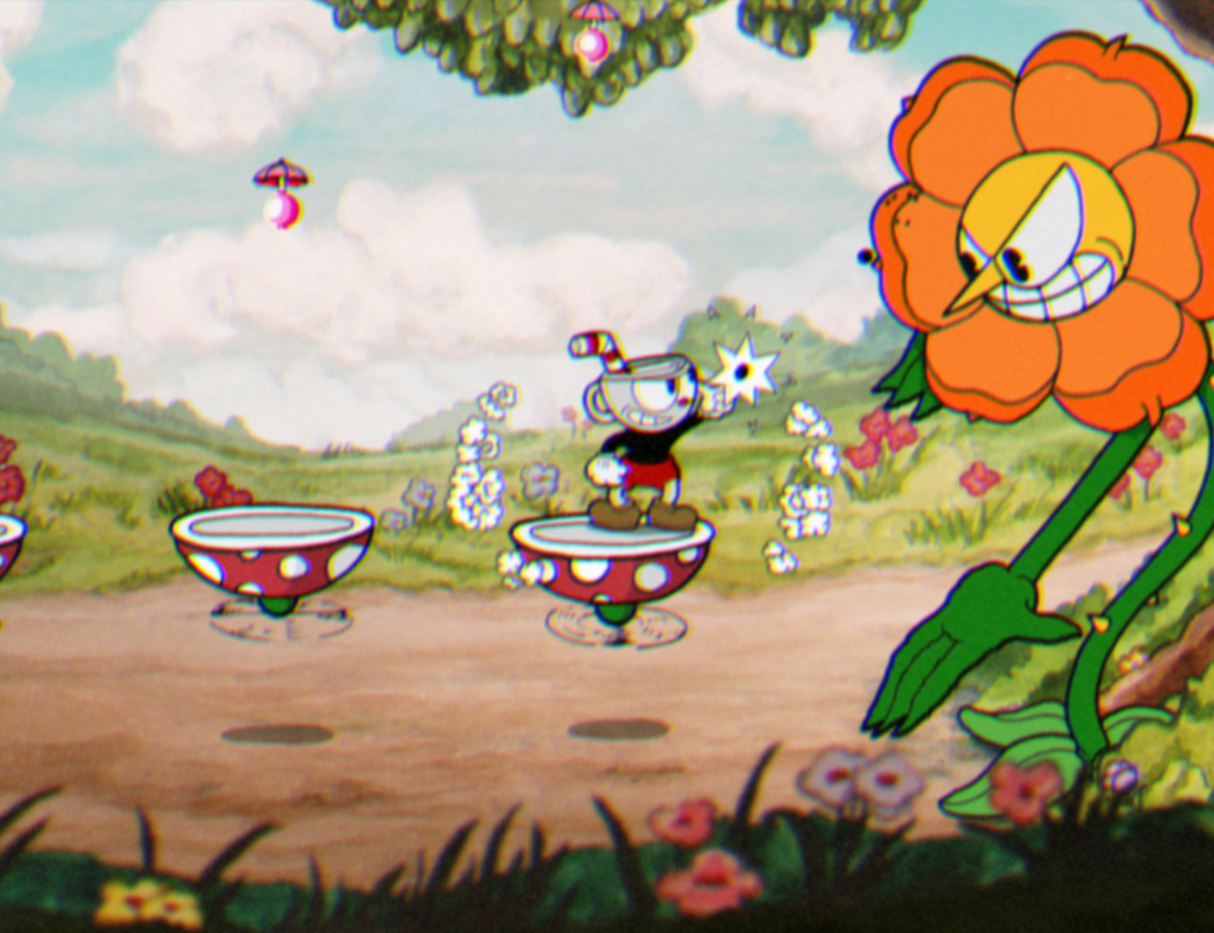
Welcome to Pop-Culture: Release Day & Legacy
Cuphead's launch success story is a testament to the power of creativity, dedication, and a well-executed vision. When the game was released on September 29, 2017, it took the gaming world by storm, garnering widespread acclaim and achieving remarkable commercial success.
The game received rave reviews from both players and critics alike. Its unique hand-drawn animation, challenging gameplay, and nostalgic charm were praised as refreshing and innovative. The game's art style, previously mentioned, was a huge risk that paid off. It was mainly celebrated and has since become a staple description of the characters.
Cuphead proved to be a commercial hit. Within two weeks of its release, the game sold over one million copies, a significant achievement for an independent video game. By early 2023, the sales had surpassed five million copies across various platforms, further solidifying its success.
Cuphead's success had a significant impact on the indie gaming scene. It showcased that independent developers could create visually stunning and challenging games, breaking away from traditional game development norms. Its triumph inspired other indie developers to explore unconventional art styles and gameplay mechanics, leading to a newfound interest in innovative game design.
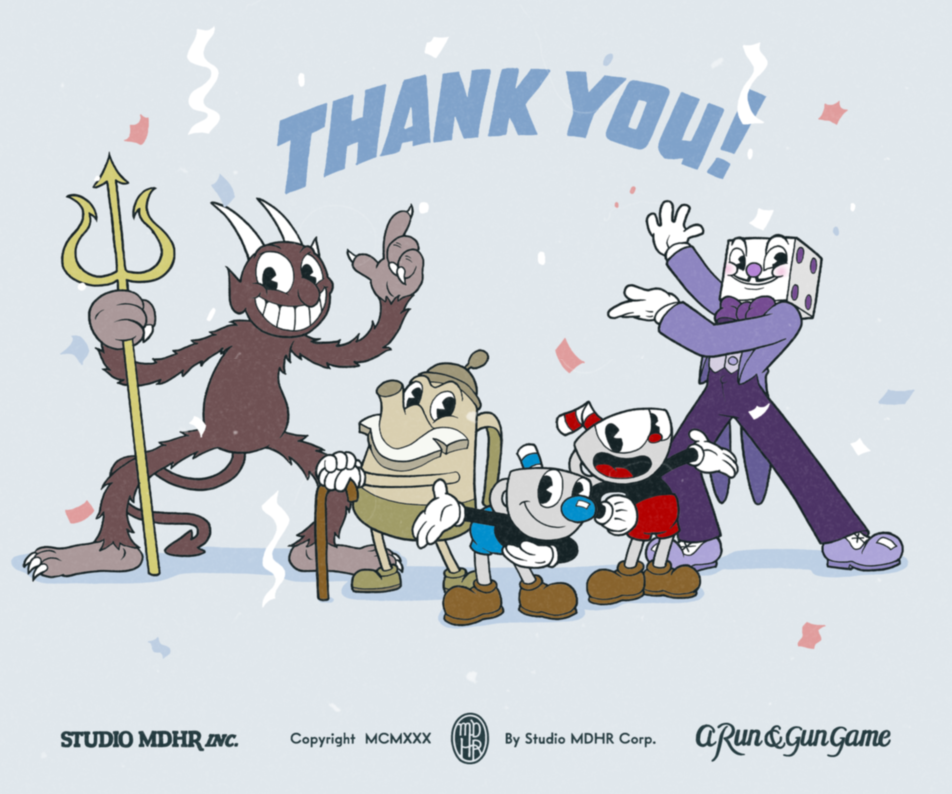
The Delicious Last Course - DLC & NETFLIX
Following the success of Cuphead, Studio MDHR announced an expansion DLC titled "Cuphead: The Delicious Last Course." Initially scheduled for release in 2019, the DLC encountered its share of development challenges, leading to further delays.
When released, the DLC introduced new characters, levels, and bosses, expanding the Cuphead universe with fresh content. However, the developers prioritized quality over rushing its release, ensuring that the additional content lived up to the high standards set by the original game.
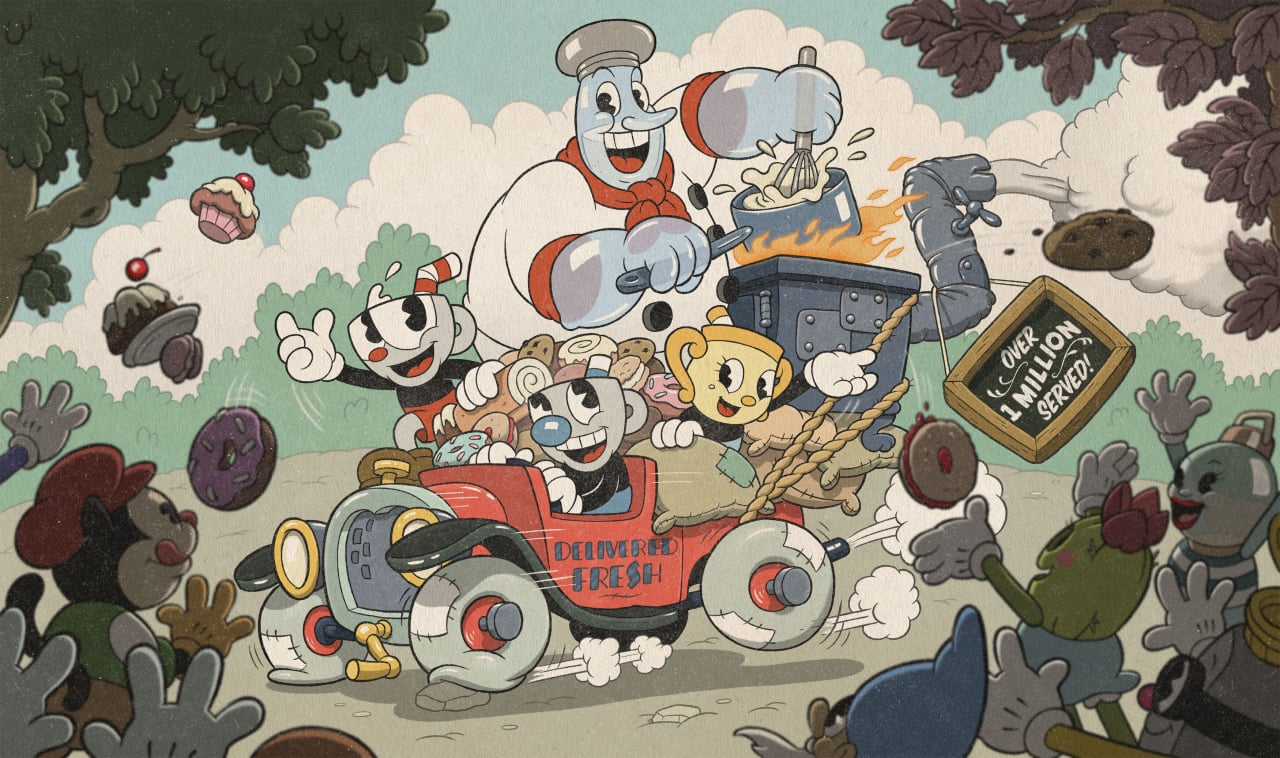
Despite the delays, "The Delicious Last Course" was highly anticipated by fans and the gaming community, who eagerly awaited the chance to experience more of Cuphead's unique art and gameplay. The DLC's release further cemented Cuphead's status as an iconic and beloved indie title, providing players with even more reasons to appreciate the game's artistry and creative brilliance.
What's next for Cuphead?
This launch's success story demonstrates how an indie game with a distinct and artistic vision can capture the hearts of players worldwide. Since the project wrapped up, Chad and Jared have hinted that more will come.
This was said in an interview with Gamerant (post mentioned here) in 2022; there has since been no news. Chad and his wife, Maja, are raising two children in Toronto, Canada, while Jared remained in Regina. No matter what project will rise in the public next, the world will be excited and waiting.
It is incredible to think that two brothers who dreamt their whole lives about creating a game without experience in game design and animation would come together and use their ambitions and passion to turn research and knowledge into success.
Chad and Jared both lived on opposite sides of the world and have given up on their dream to focus on adult priorities such as having a staple job, but, as they say: "the heart wants what it wants." When the two decided to leave their jobs, they focused only on the positivity that came with their aging ideas.
Since they were both kids, they had the freedom, time, and management to create something that stuck with their hearts. Being hardcore gamers themselves when growing up also played a massive role in their development.
When Chad and Jared played video games together, they often discussed features that should or should not have been implemented in the game they played. This would only fuel the ambitions for the following decade's production. These ideas, discussions, mistakes and inspirations came together to build the success story they now call "Cuphead."







